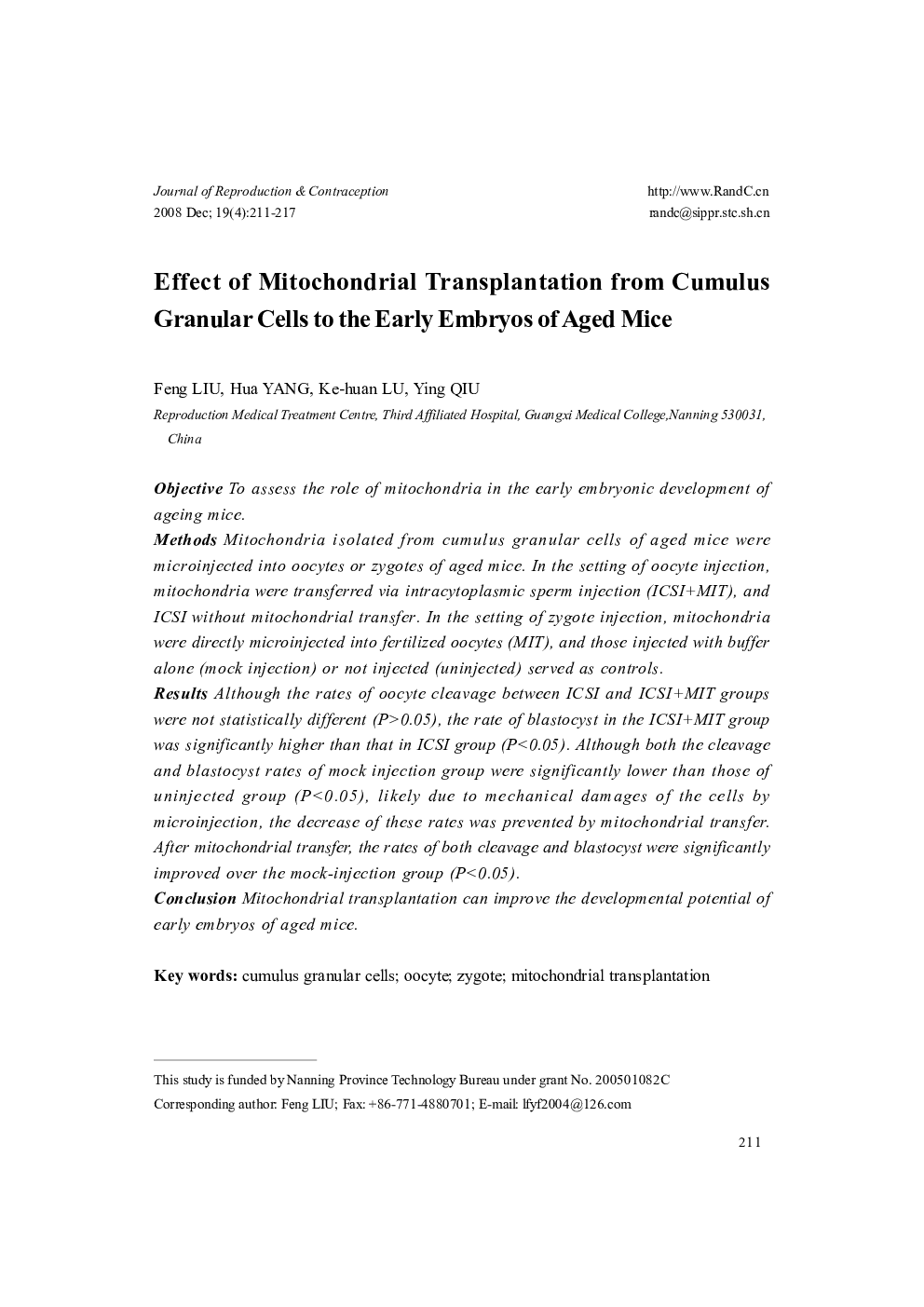| Article ID | Journal | Published Year | Pages | File Type |
|---|---|---|---|---|
| 3965638 | Journal of Reproduction and Contraception | 2008 | 8 Pages |
ObjectiveTo assess the role of mitochondria in the early embryonic development of ageing mice.MethodsMitochondria isolated from cumulus granular cells of aged mice were microinjected into oocytes or zygotes of aged mice. In the setting of oocyte injection, mitochondria were transferred via intracytoplasmic sperm injection (ICSI+MIT), and ICSI without mitochondrial transfer. In the setting of zygote injection, mitochondria were directly microinjected into fertilized oocytes (MIT), and those injected with buffer alone (mock injection) or not injected (uninjected) served as controls.ResultsAlthough the rates of oocyte cleavage between ICSI and ICSI+MIT groups were not statistically different (P>0.05), the rate of blastocyst in the ICSI+MIT group was significantly higher than that in ICSI group (P<0.05). Although both the cleavage and blastocyst rates of mock injection group were significantly lower than those of uninjected group (P<0.05), likely due to mechanical damages of the cells by microinjection, the decrease of these rates was prevented by mitochondrial transfer. After mitochondrial transfer, the rates of both cleavage and blastocyst were significantly improved over the mock-injection group (P<0.05).ConclusionMitochondrial transplantation can improve the developmental potential of early embryos of aged mice.
